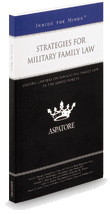On behalf of Stange Law Firm, PC posted in Divorce on Monday, July 27, 2015.
There is no shortage of sociological studies these days, and studies about relationships and families seem to be more numerous than others – at least in terms of media coverage. Perhaps this is because they address relatable topics that most of us are interested in.
That being said, studies about relationships, marriage and divorce should be understood in context. Specifically, readers should know that these studies can only analyze trends. They cannot predict the likelihood of marital success or failure for any one couple.
A recent study attempted to show a correlation between a person’s age when first married and their risk of divorce. The study’s author found (unsurprisingly) that marrying before age 25 was associated with a higher risk of divorce. Other research has already found that marrying young is associated with a higher risk of divorce, likely because most people are too young to know themselves and to handle the stresses/responsibilities of marriage.
However, the study also found that the divorce risk starts to rise again after age 32. According to the study, a person who gets married in their 30s faces a 5 percent higher risk of divorce for every year they wait after age 32. As such, the study’s author says, the most advantageous period in which to marry is between age 25 and 32.
What does this mean in practice? Truthfully, not much. Plenty of successful marriages have started before age 25 and after age 32. And as we mentioned earlier, studies can only assess general trends. They can’t predict individual outcomes.
If you married young or are getting married in your 30s or older, you don’t need to worry that you are not within the “window” of success. While it might be helpful to understand what the specific age-related risks are, please understand that your chances of marital success cannot quantified by a study.



